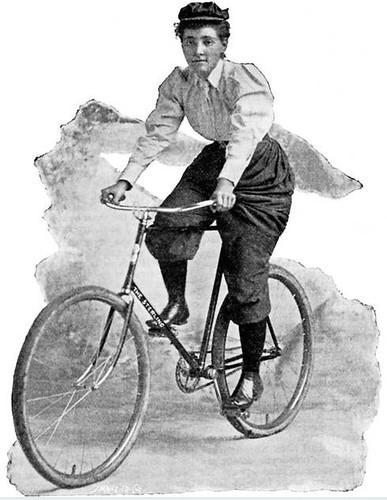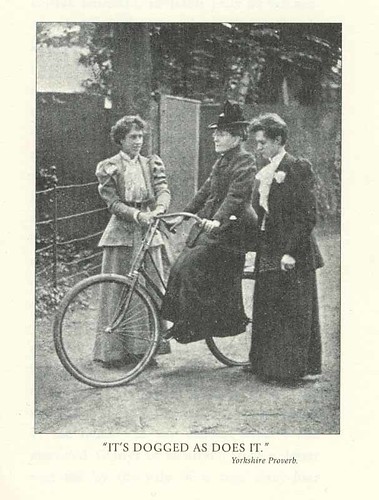Woman and Bikes

The 1890s was the peak of the American bicycle craze and consumers were buying bicycles in large numbers. In 1897 alone, more than two million bicycles were sold in the United States , about one for every 30 inhabitants.
As cycling’s popularity exploded, a new breed of woman was making her mark in the 1890s. “The New Woman” was the term used to describe the modern woman who broke with convention by working outside the home, or eschewed the traditional role of wife and mother, or became politically active in the woman’s suffrage movement or other social issues. The New Woman saw herself as the equal of men and the bicycle helped her assert herself as such.
As women learned to ride bicycles they not only gained physical mobility that broadened their horizons beyond the neighborhoods in which they lived, they discovered a new-found sense of freedom of movement, a freedom previously circumscribed by the cumbersome fashions of the Victorian era as well as by Victorian sensibilities. The restrictive clothing of the era -- corsets, long, heavy, multi-layered skirts worn over petticoats or hoop, and long sleeved shirts with high collars -- inhibited freedom of movement and seemed to symbolize the constricted lives women of the 1890s were expected to lead. Such clothing was inimical to even modest forms of exercise or exertion. Cycling required a more practical, rational form of dress, and large billowing skirts and corsets started to give way to bloomers -- baggy trousers, sometimes called a divided skirt, cinched at the knee. Although bloomers first appeared decades earlier, and a major social battle was waged over their propriety, the cycling craze practically mandated changes in women’s attire for any woman who wanted to ride.
Cycling in the 1890s was nothing less than “a general intoxication, an eruption of exuberance like a seismic tremor that shook the economic and social foundations of society and rattled the windows of its moral outlook.” 2 Nowhere was this more evident than in the role of the bicycle in the changing lives of American women. Indeed, the woman’s movement of the 1890s and the cycling craze became so inextricably intertwined that in 1896 Susan B. Anthony told the New York World’s Nellie Bly that bicycling had “done more to emancipate women than anything else in the world.”Frances Willard

Because it was argued that women couldn't ride bicycles since it was not safe in a dress and corset, women begin to wear pants (bloomers) and are freed from the corset.
Amelia Bloomer
Woman's Rights Advocate
Popularizer of the Bloomer Costume

Read more here.... it's incredibly interesting
